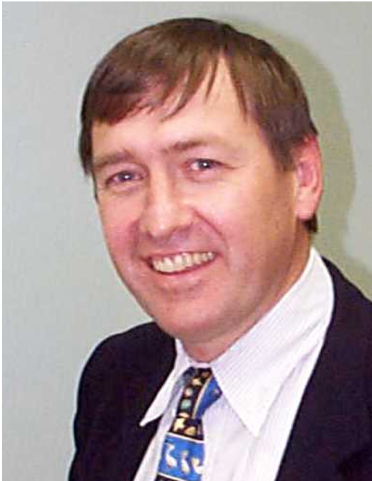Geoff Laslett (1949-2010)
The fission track community was very sad to learn of the untimely death of Geoff Laslett from cancer on 9th January 2010. To many he was a highly respected colleague and good friend

Geoff was born in Mount Gambier, South Australia in 1949, and attended numerous schools around the state, as a result of his father’s work as a Methodist Minister in various rural parishes. He graduated from the University of Adelaide with first class honours and after completing his PhD in Statistics at the Australian National University, Geoff joined CSIRO (the Australian government scientific research organisation) in the division of Mathematics and Statistics, where he worked for most of his professional career.
His contribution to fission track analysis was immense. Practically everyone working in this field will be routinely using ideas, methods and practices that derive directly from him. Geoff’s involvement with fission track analysis began in the early 1980s, when he began a collaboration with geologists (Ian Duddy, Andy Gleadow, Paul Green and others) at the University of Melbourne and his contributions to fission track analysis range from the fundamental theoretical to the highly practical. He formulated the “line segment model” as a mathematical and statistical description of latent fission tracks inside a crystal. This is a stochastic process of line segments in three dimensional space, having varying lengths and random orientations. This model provides a means of understanding many important aspects of fission track measurements as well as a basis for quantitative analysis.
One of the products of this work was the well known “Laslett et al (1987)” kinetic model for fission track annealing in apatite. Geoff managed to fit a model to the laboratory annealing data which provides a more than passable description of the annealing behaviour in geological conditions, after extrapolation over up to 10 orders of magnitude in time! Geoff regarded his main achievement here as determining the form of the model, as well as providing a quantitative understanding of the annealing process. The “Laslett et al (1987)” kinetic model illustrates many of Geoff’s qualities as a mathematician and a scientist. Arrhenius plots to describe annealing kinetics had been around for a long time […] but no-one can remember now exactly who first thought of performing annealing experiments based on confined track lengths, in a monocompositional apatite, but if it wasn’t Geoff then the idea certainly came out of discussions in which he was involved. Geoff initiated this deep quantitative understanding, and without his brilliant and incisive input, who knows where we would be now.
Geoff will be sadly missed by us all, but his legacy will stay with us forever.
Extracted from obituaries written by Paul Green and Rex Galbraith, May 2010, http://www.ontrackforum.org.
